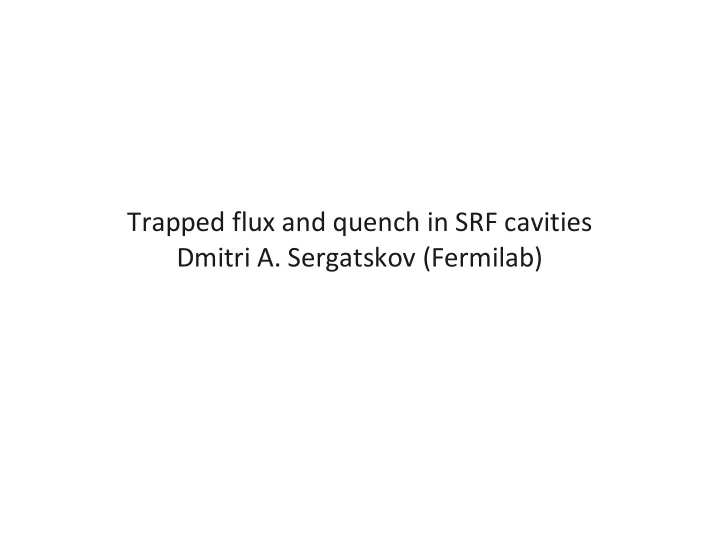

Trapped flux and quench in SRF cavities Dmitri A. Sergatskov (Fermilab)
Experimental setup Two bands with 8 CERNOX thermometers (~85 The arrow mark on the cavity points to the mm apart) each placed on the equator of the quench location. Field/current conversion for cavity. Band #1 is the bottom one. RTD#6 on the magnet coil is 150 Gauss/Amp at the the band #1 ( B1Ch6 ) and RTD #2 on the band quench location with superconducting #2 ( B2Ch2 ) are the nearest thermometers to (te1acc002 – Tesla shape 1.3 GHz single-cell) the quench location. cavity.
Degradation and recovery We apply some magnetic field and let the cavity quench and trap some magnetic flux. Its performance degrades in a good agreement with our calculations. We measure Q and E – those are the “After” values. Then we turn the field off and quench the cavity few times. E and Q measured after that are the “Restored” values. The discrepancy between calculated and measured “after” values of Q at high current may be due to: a) flux migration violating the computer model configuration; b) flux-trapping efficiency becomes less than 100% at high flux densities.
Thermometry: before and after
Recommend
More recommend